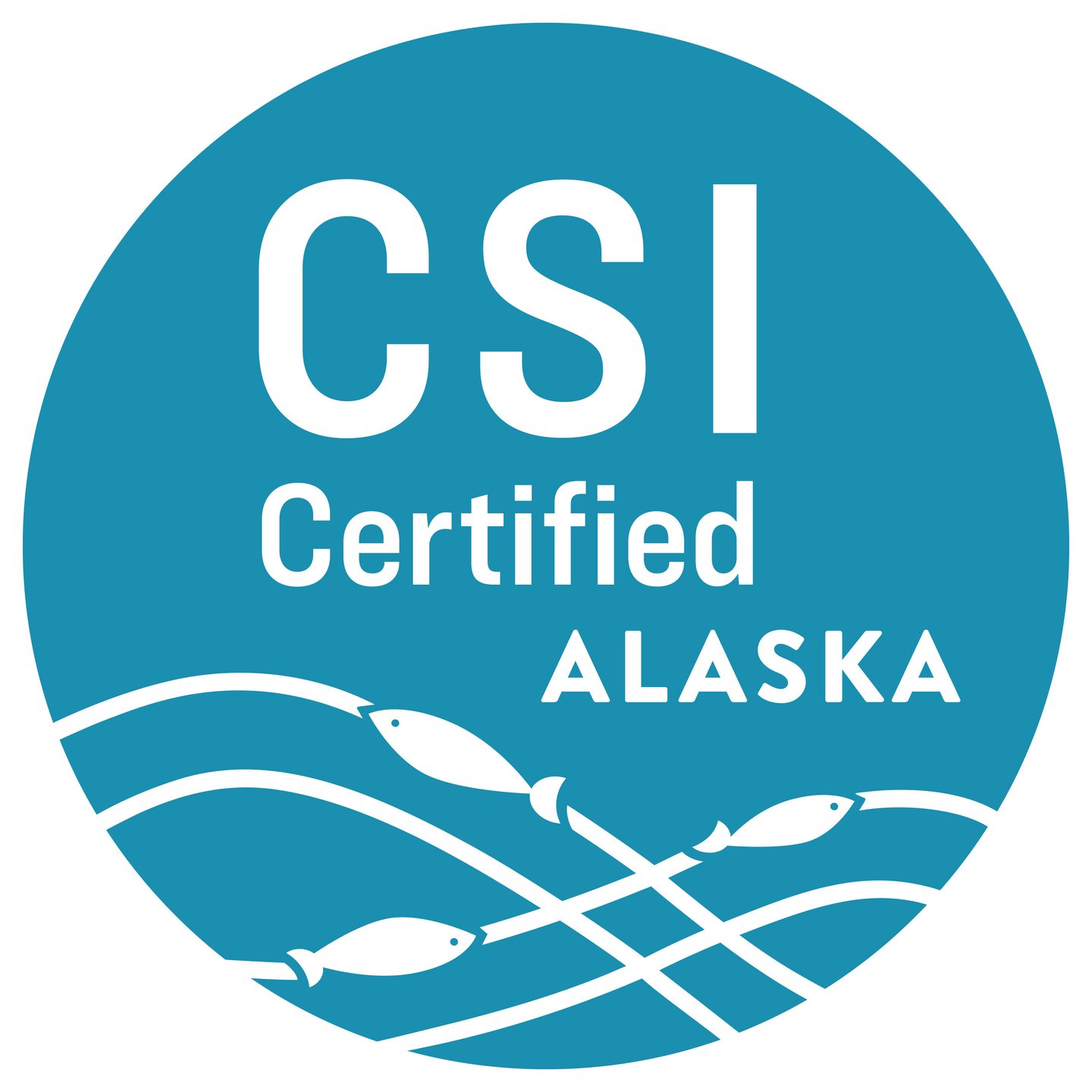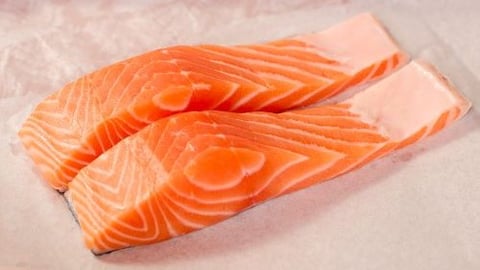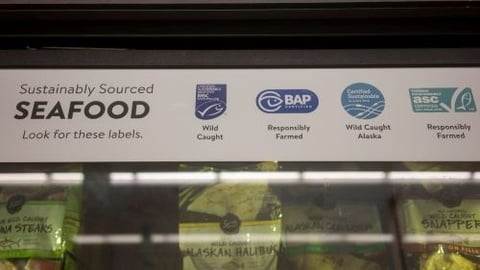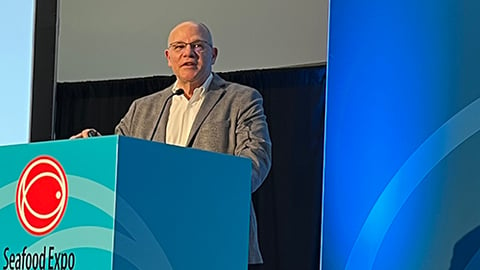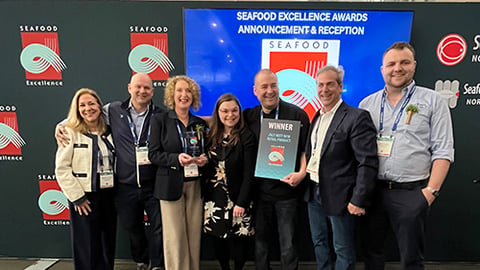The Latest Frontier of Fish
To find out the latest developments at Juneau-based Alaska Seafood Marketing Institute (ASMI) – and what those mean for retailers and consumers – Progressive Grocer reached out to Mike Kraft, executive director at Certified Seafood International (CSI), with which ASMI has embarked on a new partnership, and Amy Dukes, head of retail at ASMI. Their comments have been edited for length and clarity.
Progressive Grocer: Talk about ASMI’s new Certified Seafood International (CSI) program. What does this mean for the products ASMI offers?
Mike Kraft: CSI was formally announced in April, just ahead of the Barcelona Global Seafood Expo – providing a wonderful opportunity to showcase and educate harvesters, brands and retailers about the program. CSI offers a new choice in global wild-capture seafood certification. While ASMI has been a longtime and strong supporter of the Responsible Fisheries Management (RFM) program, the predecessor of CSI, CSI is not an ASMI-run program.
[RELATED: Erewhon Now Carries ASC-Labeled Rainbow Trout]
The Alaska RFM program has now rolled into CSI in a natural next step that allows for broader adoption of the standard beyond the United States, where it has grown market presence. The CSI program carries forward many of RFM’s strengths. The Fisheries Standard will continue to be based on the UN FAO documents and guidelines, focusing on well-managed fisheries, and it continues to offer the ability to highlight harvest origin on the logo – a valuable feature for places like Alaska that have built strong brand equity with consumers.
CSI is committed to delivering credible Global Sustainable Seafood Initiative (GSSI)-Benchmarked assurance at a reasonable cost. The program builds on the strong foundation that ASMI helped create, and ASMI continues to support CSI and its mission to promote responsible seafood around the world.
PG: How will the program manifest in consumer-facing venues such as retail stores?
MK: CSI offers a logo that signals the product comes from a CSI-certified, responsibly managed fishery. It also allows for the harvest origin to be included, which is especially important for regions like Alaska that have built strong connections with consumers around place of origin.
The CSI logo helps give buyers and shoppers added confidence that their seafood was sourced responsibly. We are also excited about the CSI website (https://csicertified.org/) and our fishery landing pages, which provide basic information about the aspects of the certified fisheries – with an option to dive deeper for those interested in doing so.
PG: How does this program tie into ASMI’s longtime commitment to sustainability?
MK: CSI is completely consistent with, and in some ways the embodiment of, ASMI’s longtime commitment to sustainability. In helping to originally establish the RFM program, ASMI recognized early on the importance of offering choice in certification. Today, with certification often a requirement in many regions, providing that choice to harvesters and the market is more important than ever.
CSI’s focus on certifying responsibly managed fisheries in line with UN FAO guidelines mirrors how Alaska has always managed and cared for its fisheries. Alaska’s dedication to sustainability is how they continually supply the world with healthy and delicious Alaska seafood for generations to come.
[RELATED: The New Era of Seafood Shopping in 2025]
That commitment goes beyond sound fisheries management – it also means protecting the environment and preserving the purity and majesty of this last wild frontier.
Since statehood in 1959, it has been mandated by the Alaska state constitution that fisheries must be maintained on the sustained-yield principle. It is because of this constitutional mandate, a comprehensive fisheries management platform and the proven track record that Alaska is recognized as a model of sustainability for the world.
PG: Please discuss your latest retail promotions – where and when, and with which retailers.
Amy Dukes: Our most recent retail promotions included successful Lent campaigns executed at Super 1, QFC and Albertsons. These initiatives, running through the recent Lent season, featured a diverse array of Alaska seafood species, including Alaska Sablefish, Pacific Cod, pink and sockeye salmon, halibut, and surimi. To drive engagement and sales, we utilized a multifaceted approach, incorporating seafood sales contests, prominent features in both weekly and monthly print and digital ads, and strategic placement of in-store point-of-sale (POS) materials.
PG: What were the aims of these campaigns, and what were the results?
AD: The primary aim of these campaigns was to capitalize on key seasonal demand, increase consumer awareness and preference for Alaska seafood, and ultimately drive sales volume across participating retailers. For the recently completed Lent promotions, we observed significant upward sales trends. Specifically, these campaigns generated a sales lift ranging from 5.5% to 45% when compared to previous performance.
PG: What seafood trends have you been paying particular attention to, and why?
AD: Sushi. Gen Z customers buy twice as much sushi as the average U.S. household, and we already know that Gen Z is more interested in eating more seafood than other generations.
Sushi not only attracts younger generations to the deli and seafood departments, but also resonates with a wide range of consumers across all demographics. According to Circana research, it is the second most incremental item in the deli department and elicits repeat purchases. Sushi sells year-round and is purchased almost equally by men and women.
Sushi holds its own against a broad section of categories in the store, like yogurt or cereal, and it is one of the biggest platforms for future growth in prepared foods.
At ASMI, we partner with retailers like Sam’s Club and Hy-Vee to highlight Alaska seafood in their sushi case offerings.
PG: What are you doing to keep increasing consumption of Alaska seafood?
AD: Shoppers want to know where their food comes from, and telling the story of Alaska seafood is a true honor. Alaska is a state, a people and an industry steeped in the tradition of fishing, and whole communities have been intimately involved with harvesting and processing Alaska seafood for generations. Fishing is more than just a source of income; it’s a way of life, representing a real relationship with the land and sea. ASMI tells the stories of these incredibly dedicated, hardworking fishermen and makes these stories available for retailers to share with their customers in our People Behind the Fish campaign.
ASMI also has the tools and resources to make it easy for grocers to build successful promotions. This includes promotional support including in-store demos, educational materials, simple recipes, consumer trends data for retailer planning, staff training on Alaska seafood varieties, and a library of photos, videos and artwork to customize your needs – plus social media support to help extend your reach.




